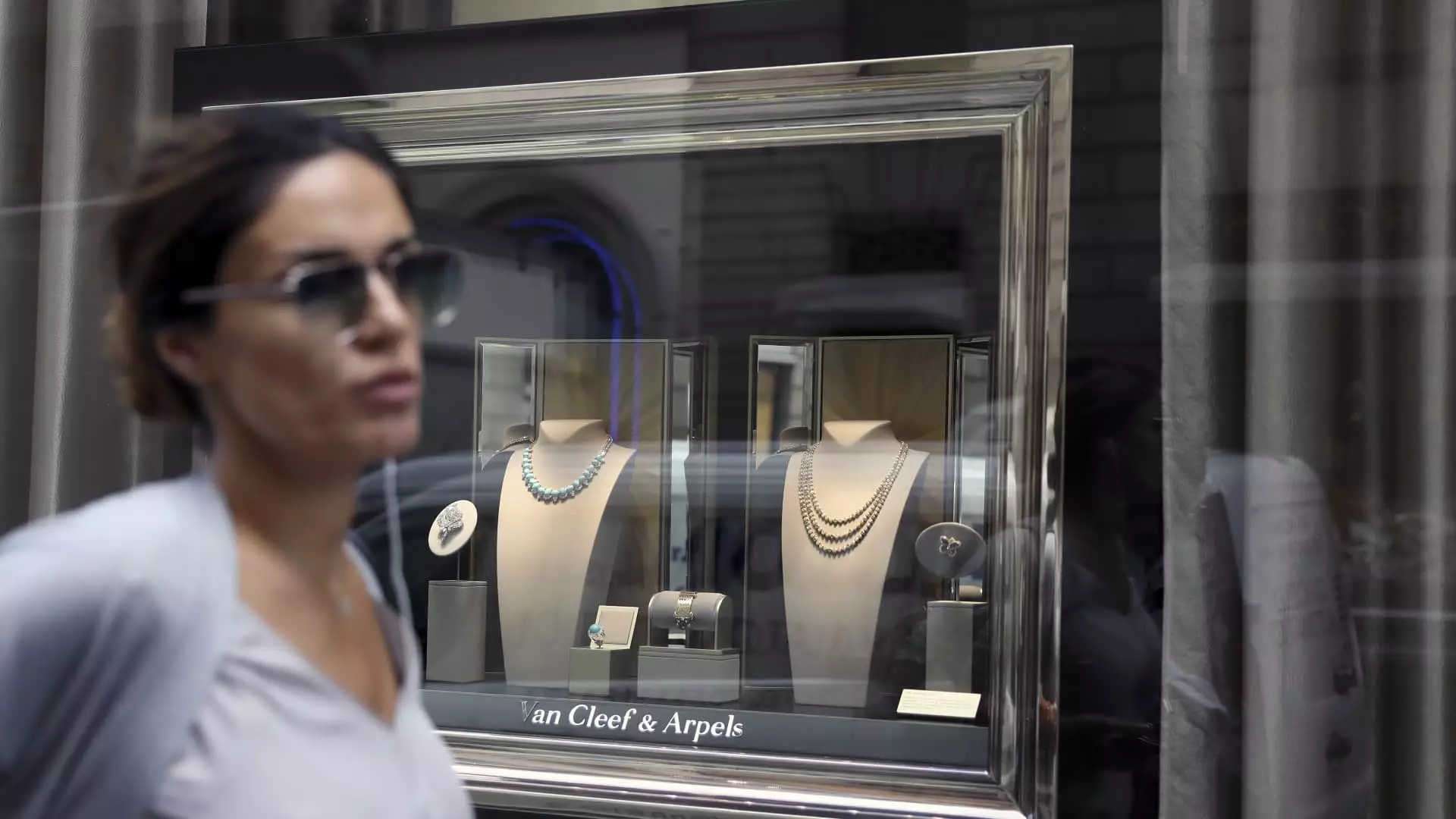In a world increasingly marked by economic uncertainties, the allure of opulent jewelry remains steadfast for the ultra-wealthy. Unfazed by the broader pullback in luxury spending, the global elite are manifesting their affluence through lavish pieces—be it diamond-encrusted rings or exquisite gemstone necklaces. This consumer segment is not simply indulging in luxury as a show of wealth, but rather as a meticulous curation of exclusivity and craftsmanship. The shift towards selectivity among the rich highlights a compelling narrative: in a sea of options, only the most exceptional will suffice. This reality resonates particularly well for Richemont, a Swiss luxury powerhouse renowned for its prestigious jewelry brands like Cartier and Van Cleef & Arpels, reminiscent of a class where quantity gives way to quality.
Richemont’s Resilient Edge
Recent reports indicate that Richemont’s Jewelry Maisons division has outperformed expectations, boasting an 11% sales growth in the last fiscal quarter. This surge underscores a critical point: while the luxury market faces turbulence, certain segments—especially jewelry—are thriving. As Luca Solca from Bernstein aptly puts it, Richemont’s brands are the “top of consumer desirability,” operating in a league that LVMH struggles to match. Despite LVMH’s efforts to dominate the landscape, it appears that Richemont enjoys a commanding position in the luxury jewelry market, which remains an oasis of growth amid a broader sales slowdown experienced by competitors like Kering and Burberry.
However, this oasis is not without its challenges. Richemont’s watch division saw sales plummet by 13% in 2024, primarily due to declining demand in China. The tragic irony lies in the pandemic-induced buying spree; post-COVID, the market saturated itself, and consumers seem to be experiencing a buyer’s remorse that Richemont and other high-end brands must contend with. Because the luxury watch industry is inherently slow to rebound, the future remains uncertain as consumers recalibrate their priorities after a flurry of pandemic-driven purchases.
A Dual Narrative: Jewelry vs. Watches
The distinction between jewelry and watches in today’s luxury market represents a fascinating dichotomy. It seems that while jewelry continues to see robust demand, watches—a category often viewed as lifetime purchases—struggle to reclaim their footing. Solca’s observation that “everybody and their dog has bought a watch out of Covid-19” encapsulates the pervasive phenomenon; consumers are now facing a saturation that dampens new purchases. In contrast, jewelry offers a more approachable luxury experience, showcasing an impulsive charm that allows for more frequent acquisitions.
The pricing dynamics further complicate the landscape. Jewelry tends to be more accessible relative to luxury handbags, which have garnered disproportionate attention. This comparative affordability fuels growth for jewelry brands, enabling them to thrive even when other categories witness stagnation. Furthermore, Richemont’s Chairman Johann Rupert made it clear that the company would refuse unmanageable price increases—an admirable stance in a luxury sector rife with inflated valuations.
The Looming Threats and Strategic Navigation
Despite the current buoyancy of Richemont’s jewelry division, analysts remain cautious, highlighting a number of significant headwinds that could undermine the company’s market domination. Factors such as the strengthening Swiss franc against the dollar, rising gold prices, and potential tariff impacts could hinder profitability and future growth. This juxtaposition of strength and vulnerability illustrates the precarious balancing act that luxury brands must perform in a volatile economic landscape.
The luxe sector’s reliance on jewelry as a growth engine reflects a necessary evolution in strategy. With increasing geopolitical tensions and economic fluctuations, Richemont must stay nimble, prioritizing brand strength and consumer desirability while addressing the internal inefficiencies in segments like watches. Investment director Russ Mould’s remarks echo these sentiments, emphasizing the importance of maintaining a responsive and adaptive portfolio amidst changing market dynamics.
In a climate where the wealth disparity continues to narrow, one can only speculate how enduring this fascination with high-end jewelry will be. As the rich recalibrate their buying habits and prioritize quality over quantity, the jewelry sector may just have the resilience to weather the tempest of economic uncertainty. The glimmering future of luxury, it appears, is not one-size-fits-all but rather a spectrum defined by taste, prestige, and an unwavering appreciation for the finer things in life.

